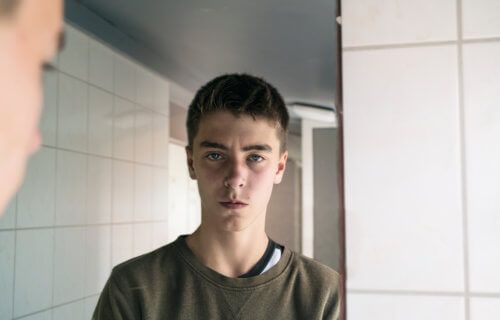ROTTERDAM, The Netherlands — Boys who are insecure about their looks as teenagers are almost three times more likely to suffer from severe depression as adults, a recent study warns.
The study by researchers at Erasmus University in The Netherlands tracked 4,000 teenagers for several years. Researchers found that young men are a staggering 285 percent more likely to have a severe depressive episode if they were unhappy with their bodies as teens.
Their female counterparts were also affected, but were 84 percent more likely to suffer the same problems if they had been insecure about their appearance. Well over half of teens, 61 percent, experience body dissatisfaction, putting them at risk of developing eating disorders, unhealthy behaviors, and poor mental health.
Previous research has mainly focused on young people in the United States and hasn’t looked at millennials (born between 1981 and 1997). These individuals in particular have grown up with the well-documented negative effects social media has on body image.
“It is possible that in the era of social media and increasing pressures on body ideals, male adolescents have also become sensitive to idealized body image pressures, which may translate into later depressive episodes,” the authors write.
Researchers admit the survey was skewed towards female body ideals with questions about hips, breasts, and figure. It revealed a variety of body insecurities harbored by a total of 3,753 14-year-olds from Somerset, England. Both boys and girls surveyed were “mildly satisfied” with their bodies overall, but results showed girls were more dissatisfied than boys.
Girls tended to dislike their thighs, stomach, and weight, but liked their hair and hips. Boys, on the other hand, were more self-conscious about their body build, stomach, and hips, but weren’t bothered about their hair, weight, or legs.
Nearly one in three girls and around one in seven boys were insecure about their weight, and around one quarter girls and one in seven boys were dissatisfied with their figure.
Researchers assessed the teenagers for depression when they turned 18, revealing girls were more likely to experience episodes than the boys overall. One in ten of the girls surveyed reported at least one mild depressive episode compared with one in 20 of the boys. Nearly seven percent of the girls and nearly three percent of the boys reported at least one moderately severe depressive episode, while severe depression affected one and a half percent of the girls and less than one percent of boys.
Body dissatisfaction at 14 predicted depressive episodes of all degrees of severity among the girls and mild and severe depressive episodes among the boys by the time they were 18 years old. These findings held true even after taking account of depressive symptoms at the age of 14.
After putting the body image survey results on a scale, researchers realized each increase on the scale at the age of 14 was linked to heightened risk of depression.
For girls, each scale point was linked to a 63 percent higher chance of mild depression, a 67 percent change of moderate depression, and an 84 percent risk of severe symptoms. While the effect of body dissatisfaction was comparable between boys and girls when it came to mild depression, the difference for severe symptoms was stark. Each increase in the body dissatisfaction scale at the age of 14 among the boys was associated with a 50 percent higher risk of at least one mild episode, but a huge 285 percent risk of severe depression.
The study is published in The Journal of Epidemiology & Community Health.
SWNS writer William Janes contributed to this report.

So… we must help the girls!